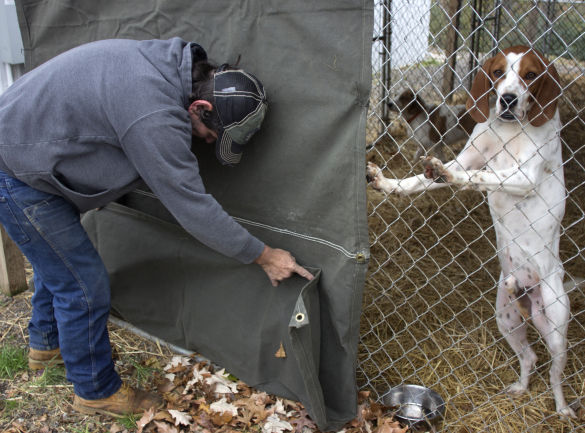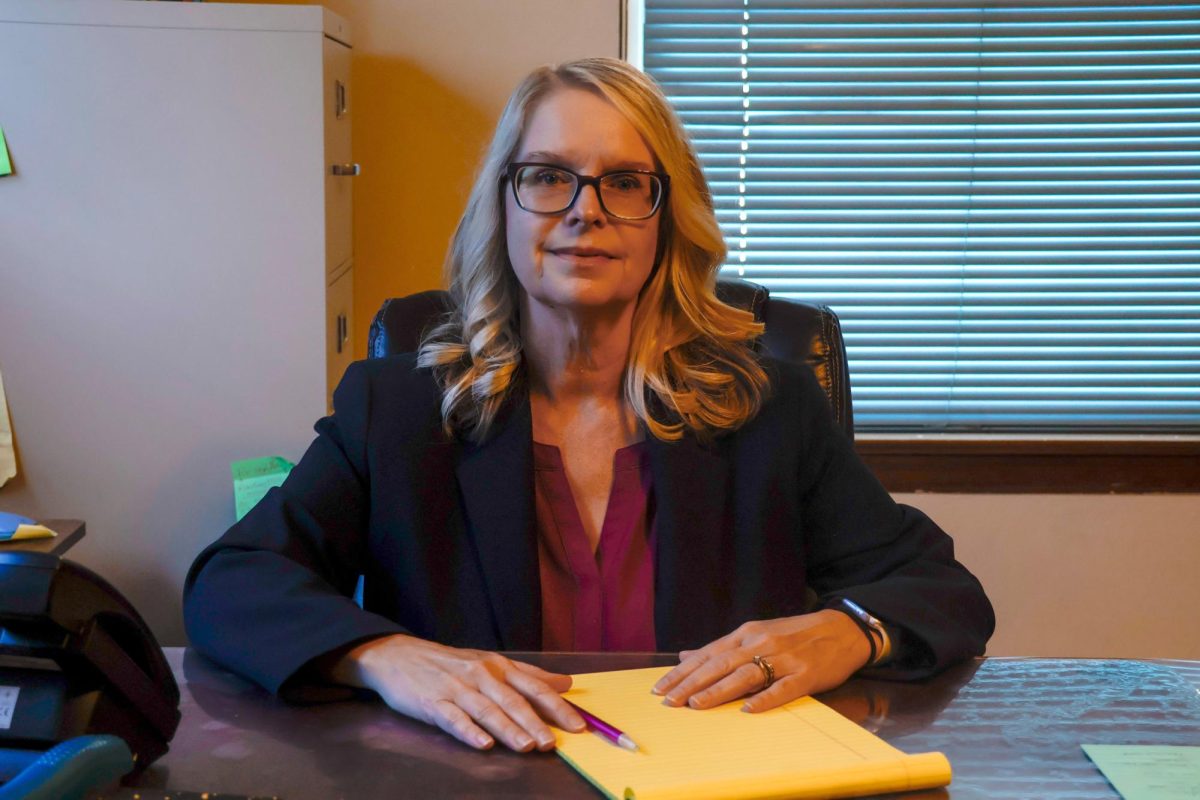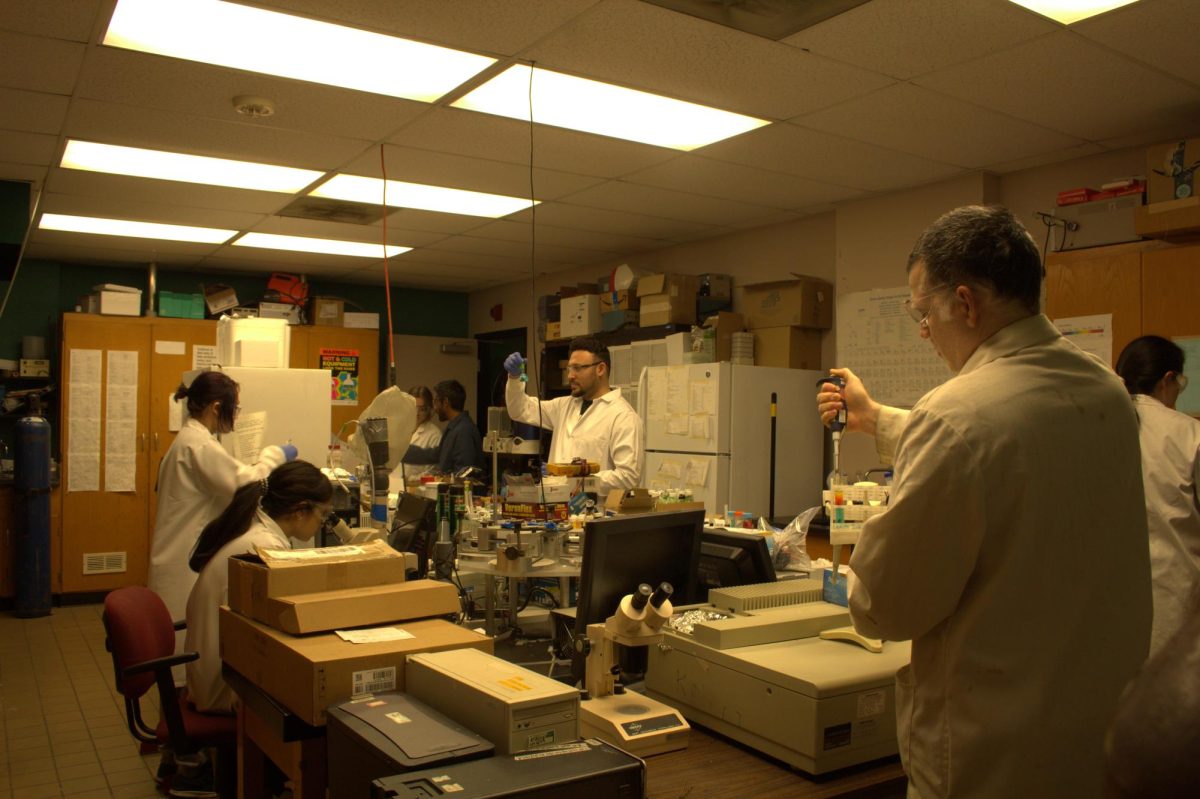Shelters adjust care for cold weather

November 12, 2014
As temperatures decrease, different animal shelters in the southern Illinois area have their own way of handling new animals.
Of the more than 7 million companion pets that enter shelters each year, 20 percent are adopted and 20 percent are euthanized, according to the American Society for Prevention of Cruelty to Animals.
St. Francis Care in Murphysboro is a no-kill shelter. A no-kill shelter is a facility that houses as many animals as possible without euthanizing them.
Advertisement
Kay Creese, the executive director of St. Francis Care, said the shelter is at capacity with 110 animals, most of which are dogs. She said she does have to turn away animals, but refers people to other no-kill shelters in the area,which includes Pets Are Worth Saving in Anna and Wright-Way Rescue in Murphysboro.
“If I don’t have kennel space, I don’t have kennel space,” she said. “But we try to have some kennels open this time of year when it starts getting cold, because we get a lot of desperation cases.”
Creese, a licensed veterinarian, said desperation cases are animals who are underweight, sick or without shelter.
She said these cases are results of pet owners not adjusting animal care to fit the season, which includes providing fresh, unfrozen water, food and sufficient insulation for outdoor homes.
Creese said the shelter stockpiles food year round, and provides free food and low-cost veterinary aid, including spays and neuters, to low-income households. She said the shelter has provided medical help since she began working there in 2009, and she has performed about 5,000 surgeries in that time.
“The need for shelters and the number of strays, homeless and abandoned animals is an out-of-control problem,” she said. “If people would spay and neuter their animals, we could cut down on this problem.”
She said people choose to not spay or neuter their pets for many reasons.
Advertisement*
“Part of it is costs, probably part of it is lack of knowledge, knowing that you can do it or knowing that there are facilities available for doing it,” she said. “Sometimes, too, there’s a misunderstanding as to why its important.”
Creese said it costs roughly $25 a day to house and feed each animal, and the shelter’s costs rise during the winter to heat the five buildings that house the animals. She said the shelter primarily runs on donations.
Lora Jackson, the manager at Southern Illinois Humane Society in Murphysboro, said her shelter also runs on donations, but is an open-access facility, meaning they take all animals given to them.
“We’re a housing facility for animal control, so we accept everything that’s brought to us, whether it’s a stray or it’s a pet someone’s had for years,” she said. “If it’s a stray we hold them for seven to 10 days, depending on the circumstance, and we try to find an owner.”
Jackson said there are 14 dogs and 20 cats in the shelter’s adoption program. She said there is about the same amount of space for stray animals not in the adoption program.
“The shelters that don’t euthanize can be selective with what they take,” she said. “We are here for everything and anything that needs a place to go, and that includes animals that aren’t very friendly or are injured.”
Jackson said the decision to euthanize animals is usually based on the amount of open space at the shelter and temperament of the animal.
She said the shelter does not make the number of euthanized pets public, but it varies greatly.
“We have about 200 animals that come in a month,” she said. “It really depends on the month, and how many other shelters are taking animals from us as to how many animals we euthanize.”
Jackson said in the winter the number of animals in the shelter drops.
“As it gets colder, we notice a decrease generally with the amount of animals that come in,” she said. “A lot of that has to do with litters. A lot of cats have litters in the summertime, but we do have some litters of puppies in the fall.”
Jackson said it is important for pets to be fixed, and the shelter began the Pennies for Pets program, funded by donations and grants, in the 1990s to help pet owners combat veterinary costs.
“It is a voucher program where the member of the public pays $35 and we pay $35 and they get a coupon where they can get a pet fixed at a local veterinarian that accepts that coupon,” she said.
Jackson said issues other than overpopulation also affect animal safety.
She said cats particularly like to hide beneath cars for warmth. She suggests knocking on the hood to save them from possible accidents.
“We always support bringing them inside,” she said. “I would say just don’t forget about them. Make sure that they’re comfortable. They’re a part of your family.”
Jackson said Animal Control ensures housing laws for pets are being followed year round. She said it also has a doghouse adoption program to help citizens provide adequate shelter for their pets.
“There’s no excuse for an animal to be out in a cage or out without any protection,” she said. “Under a tree is not protection enough in my judgment.”
Marissa Novel can be reached at [email protected], on Twitter @marissanovelDE or at 536-3311 ext. 268.
Advertisement








